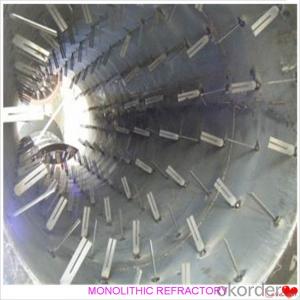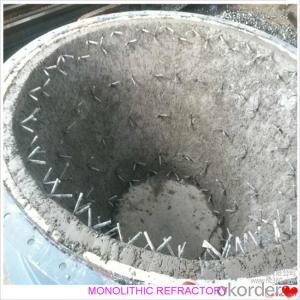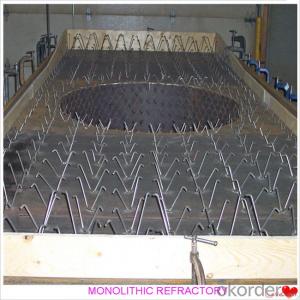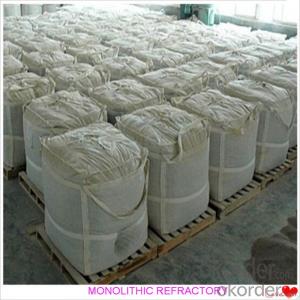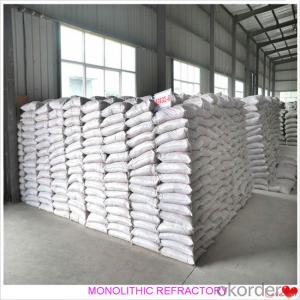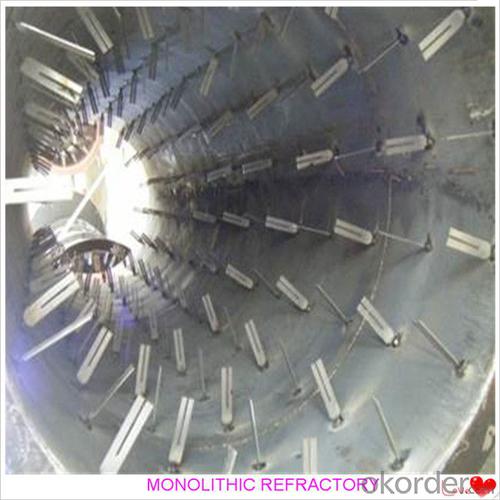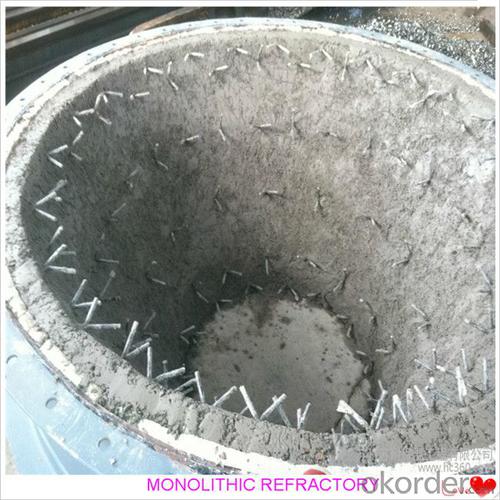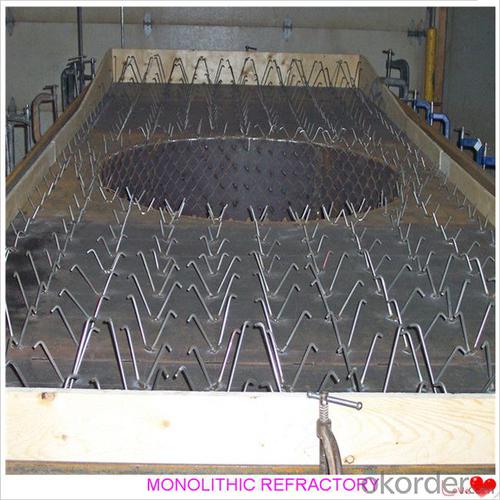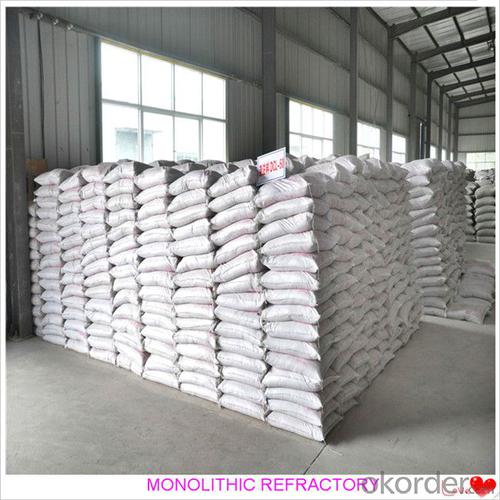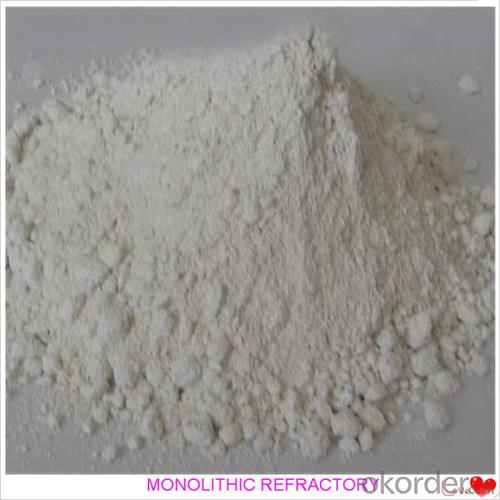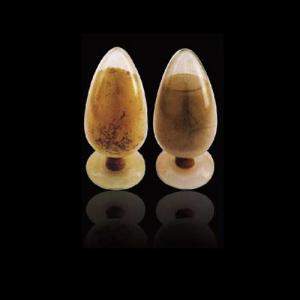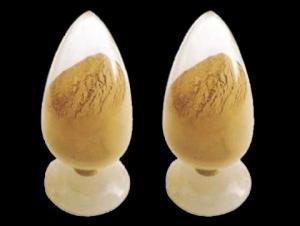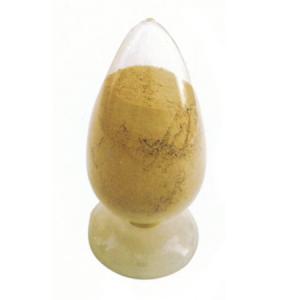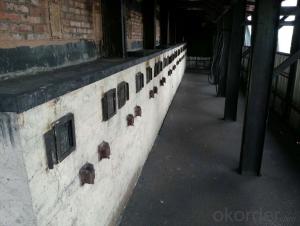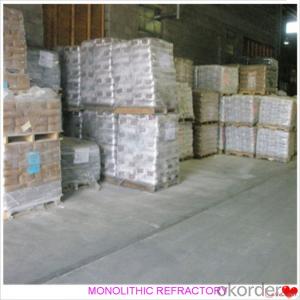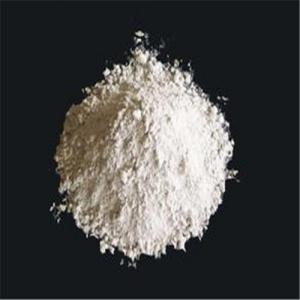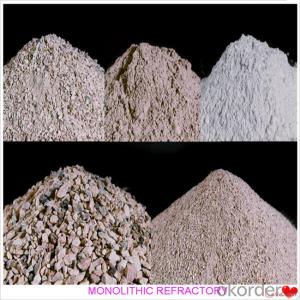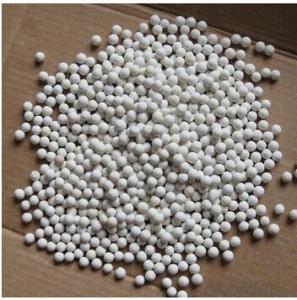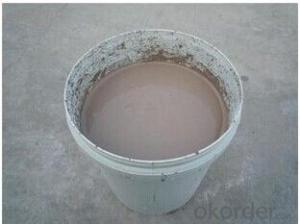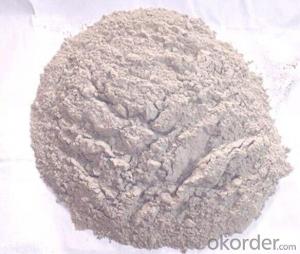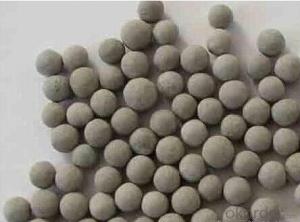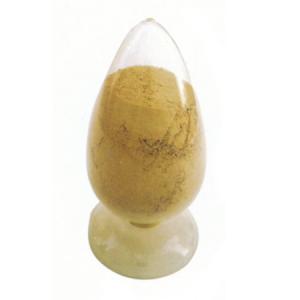Monolithic Refractory Castable Refractory Castable For Iron and Steel Industry
- Loading Port:
- China main port
- Payment Terms:
- TT or LC
- Min Order Qty:
- 1000 kg
- Supply Capability:
- 3000000 kg/month
OKorder Service Pledge
OKorder Financial Service
You Might Also Like
Monolithic Refractory Castable Refractory Castable For Iron and Steel Industry
Product Description of Refractory Castable:
Refractory castable is manufactured according to international standards. The product is famous for its excellent abrasion resistance and low thermal conductivity. Further, these can be provided in different specifications as required by the clients. The refractory castables are used high purity raw materials and additives as the main material, and made of under superfine powder adding technology.
Product Advantages of Refractory Castable:
The refractory castable has excellent structural stability and air tightness, and has high physical and chemical properties, also has a fine working ability.They should be used with the same material products.
Product Applications of Refractory Castable:
For feature of refractory castable, they have excellent abrasion resistance, thermal shock resistance, high-temperature resistance, anti-corrode and have high intensity.
Designed for refractory lining of blast furnace iron and slag runners, skimmers and soon
Refractory castable can be used in troughs of small and mid size BFs and in all positions of the troughs where fast tapping is required.
Product Specifications of Refractory Castable
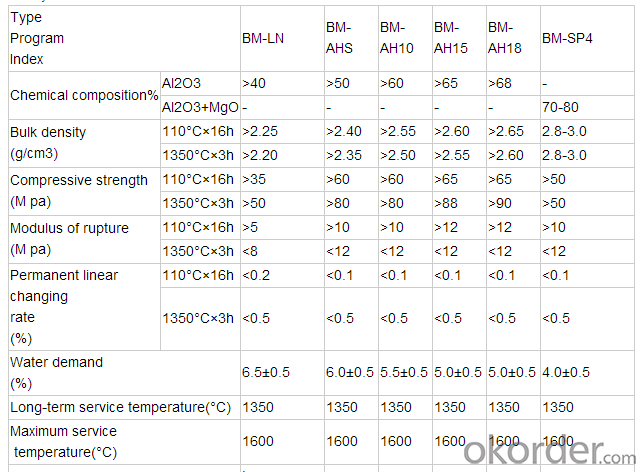
FAQ:
1. How you can control your quality?
For each production processing, we have complete QC system for the chemical composition
and Physical properties. After production, all the goods will be tested, and the quality certificate
will be shipped along with goods.
2. What's your delivery time?
It usually needs about 20days- 45 days after receiving the deposit.
3. Do you provide free samples?
Yes, we can provide a free sample for testing, If we have sample in stock,
The quantity based on the material type, The buyer should bear all the shipping costs.
4. What's your payment terms?
We can accept 30% deposit, 70% balance before shipment for ordrs over $ 2000.
5. Can we visit your Company?
Yes, certainly. You are very welcome to China and we will be honored to have a customer and friend.
Product Picture of Refractory Castable:
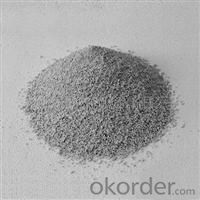
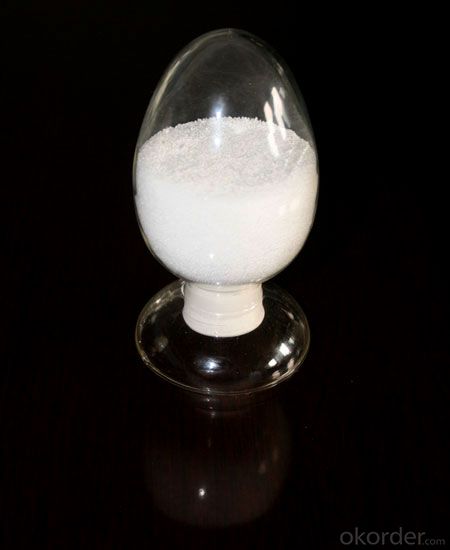
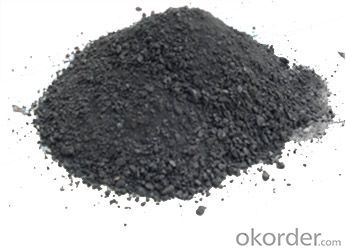
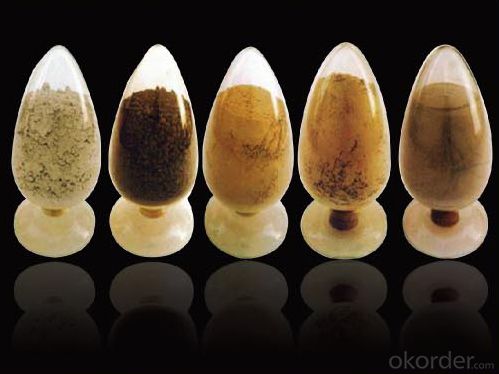
- Q: How do monolithic refractories resist high temperatures?
- Monolithic refractories, with their unique composition and structure, are specifically designed to withstand high temperatures. Unlike traditional refractory bricks, which are made up of multiple pieces, these refractories are created from a single material or piece. The primary factor contributing to the high temperature resistance of monolithic refractories is their elevated melting point. Materials such as alumina, silica, and magnesia, which have melting points ranging from 1650°C to 2000°C, are utilized in their production. This characteristic allows the refractories to endure extreme temperatures without experiencing significant deformation or melting. Moreover, monolithic refractories possess exceptional thermal stability. They exhibit low thermal conductivity, enabling them to effectively insulate against heat transfer. As a result, these refractories can maintain their structural integrity even when exposed to rapid temperature changes or thermal shocks. Furthermore, the monolithic nature of these refractories grants them enhanced resistance to thermal stress. Unlike traditional refractory bricks, they lack joints or seams that are susceptible to thermal expansion and contraction. Consequently, they exhibit greater resistance to cracking or spalling when subjected to high temperatures. Additionally, monolithic refractories have the ability to develop a protective layer or slag on their surface when exposed to elevated temperatures. This slag acts as a barrier, preventing direct contact between the refractory material and the hot gases or molten metals. Consequently, the risk of chemical reactions or corrosion is reduced. In conclusion, the combination of high melting point, thermal stability, resistance to thermal stress, and the capacity to form a protective slag makes monolithic refractories highly effective in withstanding high temperatures. They find wide applications in various industries, including steel, cement, glass, and petrochemical, where they encounter extreme heat conditions.
- Q: How do monolithic refractories perform in rotary kiln applications?
- Due to their unique properties and characteristics, monolithic refractories prove highly effective in rotary kiln applications. Unlike traditional brick and mortar refractories, these refractories are designed to be installed as a single, solid unit. One of the primary advantages of monolithic refractories in rotary kilns is their incredible ability to withstand high temperatures and thermal stresses. Operating at temperatures as high as 3000 degrees Fahrenheit, rotary kilns subject refractories to extreme conditions. However, monolithic refractories excel in handling such temperatures without cracking or failing, ensuring the longevity and reliability of the kiln. Another crucial performance aspect of monolithic refractories in rotary kilns is their resistance to chemical attack. Industries like cement production often employ rotary kilns, where the materials being processed can be highly corrosive. Monolithic refractories offer excellent protection against chemical attack, safeguarding the kiln from deterioration and extending its service life. Moreover, monolithic refractories are renowned for their exceptional thermal conductivity and insulation properties. This aids in maintaining consistent and efficient heat transfer within the kiln, thereby enhancing the overall energy efficiency of the process. Furthermore, the installation of monolithic refractories in rotary kilns is relatively quick and straightforward compared to traditional brick and mortar refractories. The monolithic materials can be cast or gunned into place, creating a seamless lining that eliminates the need for individual bricks and mortar joints. This not only saves time during installation but also minimizes the potential for weak points or gaps in the lining, guaranteeing a more durable and effective refractory system. In conclusion, monolithic refractories offer outstanding performance in rotary kiln applications. Their ability to withstand high temperatures, resist chemical attack, provide efficient heat transfer, and offer easy installation make them the preferred choice for industries relying on rotary kilns in their production processes.
- Q: How do monolithic refractories handle thermal expansion and contraction?
- Monolithic refractories handle thermal expansion and contraction by their ability to withstand high temperatures and adapt to changes in size without cracking or breaking. They are designed to have low thermal conductivity, which helps to minimize stress caused by thermal cycling. Additionally, they are often composed of materials with high refractoriness and high thermal shock resistance, allowing them to expand and contract with minimal damage.
- Q: How do monolithic refractories perform in blast furnace taphole applications?
- Monolithic refractories perform exceptionally well in blast furnace taphole applications due to their unique characteristics and properties. Firstly, monolithic refractories are known for their superior thermal resistance. Blast furnace tapholes are exposed to extremely high temperatures and thermal shocks, making it essential to have a refractory material that can withstand these conditions. Monolithic refractories have high refractoriness, meaning they can maintain their structural integrity even at elevated temperatures, ensuring the taphole remains functional. Secondly, monolithic refractories have excellent erosion and corrosion resistance. In blast furnace taphole applications, the refractory material is constantly exposed to molten metal, slag, and gases that can cause erosion and chemical reactions. Monolithic refractories are designed to resist these aggressive environments, minimizing wear and extending the service life of the taphole. Furthermore, monolithic refractories offer good thermal conductivity and insulation properties. This is crucial for blast furnace tapholes as they need to maintain a consistent and controlled flow of molten metal. The refractory material must be able to transfer heat efficiently while also providing insulation to prevent excessive heat loss, ensuring optimal performance and productivity of the blast furnace. Additionally, monolithic refractories are easy to install and repair. Blast furnace tapholes require regular maintenance due to the harsh conditions they are subjected to. Monolithic refractories can be easily shaped and applied, allowing for quick repairs or replacement of damaged areas. This reduces downtime and increases the operational efficiency of the blast furnace. In summary, monolithic refractories are highly suitable for blast furnace taphole applications due to their excellent thermal resistance, erosion and corrosion resistance, good thermal conductivity and insulation properties, as well as ease of installation and repair. These characteristics make them a reliable and effective choice for maintaining the functionality and performance of blast furnace tapholes.
- Q: What are the considerations for selecting monolithic refractories for ladles and tundishes?
- Some considerations for selecting monolithic refractories for ladles and tundishes include the specific temperature requirements, chemical composition of the molten metal, thermal shock resistance, erosion and corrosion resistance, mechanical strength, ease of installation and maintenance, and cost-effectiveness.
- Q: What are the factors affecting the thermal conductivity of monolithic refractories?
- The thermal conductivity of monolithic refractories can be influenced by several factors. Firstly, the chemical composition of the refractory material plays a significant role in determining its thermal conductivity. The types and amounts of raw materials used can result in different thermal conductivities. For example, refractories with a higher content of insulating materials, such as alumina or silica, tend to have lower thermal conductivities. Secondly, the porosity of the refractory material also affects its thermal conductivity. Higher porosity means more air or gas-filled voids within the material, which act as thermal insulators. Therefore, refractories with higher porosity generally have lower thermal conductivities. Thirdly, the density of the refractory material is another important factor. Higher density materials usually have higher thermal conductivities as the particles are packed more closely together, allowing for better heat transfer. Moreover, the size of the grains in the refractory material can impact the thermal conductivity. Smaller grain sizes result in higher contact points between particles, facilitating better heat transfer. Therefore, refractories with smaller grain sizes typically have higher thermal conductivities. Additionally, the temperature at which the refractory material operates can affect its thermal conductivity. Some materials may exhibit changes in thermal conductivity at different temperature ranges. For instance, certain refractories may have lower thermal conductivities at low temperatures but higher conductivities at high temperatures due to changes in their crystal structure. Furthermore, the presence of moisture or water in the refractory material can significantly decrease its thermal conductivity. Water has a relatively low thermal conductivity, so even a small amount of moisture can act as an insulating barrier within the material. The microstructure of the refractory material, including the arrangement and orientation of its grains, can also affect thermal conductivity. A well-aligned microstructure with good interconnectivity between the grains can enhance heat transfer, resulting in higher thermal conductivity. In conclusion, the thermal conductivity of monolithic refractories is influenced by factors such as composition, porosity, density, grain size, temperature, moisture content, and microstructure. Understanding and controlling these factors is crucial for optimizing the thermal performance of monolithic refractories in various high-temperature applications.
- Q: What are the specific requirements of monolithic refractories for ladle purging applications?
- Monolithic refractories used for ladle purging applications need to have specific requirements such as high thermal shock resistance, excellent erosion resistance, and good insulating properties. They should also have low porosity to prevent excessive penetration of slag or metal, high strength to withstand the mechanical stresses during purging, and good chemical stability to resist the corrosive environment of the ladle. Additionally, they should have good workability for ease of installation and repair.
- Q: What are monolithic refractories?
- Monolithic refractories are a type of refractory material that is manufactured as a single, homogeneous unit, as opposed to being made from individual bricks or precast shapes. They are characterized by their ability to be shaped and installed in various applications without the need for joints or mortar, making them a versatile and convenient choice for lining furnaces, boilers, kilns, and other high-temperature industrial equipment. These refractories are typically composed of a mixture of refractory aggregates, binders, and additives, which are carefully selected and combined to provide the desired properties such as high temperature resistance, thermal shock resistance, and chemical durability. The aggregates used can include materials like alumina, magnesia, zirconia, and silica, while binders like clay, cement, or phosphate are added to hold the aggregates together. One of the advantages of monolithic refractories is their ability to adapt to complex shapes and designs, allowing for customized linings that can be tailored to specific equipment requirements. They are often applied by pouring, gunning, ramming, or spraying the refractory material onto the surface to be lined, allowing for quick and efficient installation. This eliminates the need for time-consuming bricklaying and jointing, reducing installation time and labor costs. Monolithic refractories are also known for their superior thermal conductivity, which enables them to withstand high temperatures and sudden temperature changes. They offer excellent insulation properties, preventing heat loss and improving energy efficiency in industrial processes. Furthermore, these refractories exhibit good resistance to chemical attack from molten metals, slags, gases, and other corrosive substances found in various industrial environments. This makes them highly suitable for applications in industries such as steel, cement, glass, petrochemical, and non-ferrous metals. In summary, monolithic refractories are a versatile and efficient solution for high-temperature applications. Their ability to be shaped and installed without joints or mortar, coupled with their excellent thermal conductivity and chemical resistance, make them a valuable choice for lining industrial equipment that operates under extreme conditions.
- Q: How do monolithic refractories contribute to energy efficiency in iron and steel manufacturing?
- Monolithic refractories contribute to energy efficiency in iron and steel manufacturing through their superior insulation properties and ability to withstand high temperatures. These refractories minimize heat loss, reducing the energy required for heating and maintaining the desired temperature in the manufacturing process. Additionally, their durability and resistance to thermal shock help to extend the lifespan of furnaces and other equipment, reducing the need for frequent repairs or replacements, further enhancing energy efficiency.
- Q: How do monolithic refractories improve the efficiency of ladle and tundish lining systems?
- Monolithic refractories play a crucial role in improving the efficiency of ladle and tundish lining systems in several ways. Firstly, monolithic refractories are made from a single piece of material, which eliminates the need for joints or seams. This seamless construction ensures that there are no weak points in the lining system, reducing the risk of leakage or infiltration of molten metal. Additionally, monolithic refractories offer excellent thermal insulation properties. They have low thermal conductivity, meaning they can withstand high temperatures without transferring heat to the surrounding environment. This insulation capability minimizes heat loss from the ladle or tundish, allowing for better heat retention and energy efficiency. It also helps maintain the desired temperature of the molten metal, preventing premature solidification and maintaining the desired fluidity for casting. Furthermore, monolithic refractories offer superior resistance to chemical attacks from molten metal and slag. They have excellent corrosion resistance properties, ensuring that the lining remains intact and durable even when exposed to aggressive chemical reactions. This resistance to corrosion extends the lifespan of the lining system, reducing the frequency of maintenance and replacement, thereby improving overall efficiency and reducing downtime. Another advantage of monolithic refractories is their ease of installation. Unlike traditional brick or block linings, monolithic refractories can be applied as a single, uniform layer, making the installation process simpler and quicker. This reduces the time required for lining repairs or replacements, minimizing production interruptions and improving the overall operational efficiency of ladles and tundishes. In summary, monolithic refractories improve the efficiency of ladle and tundish lining systems by providing seamless construction, excellent thermal insulation, superior corrosion resistance, and easy installation. These characteristics ensure better heat retention, reduced heat loss, increased durability, and minimized downtime, resulting in improved productivity and cost-effectiveness for metal casting processes.
Send your message to us
Monolithic Refractory Castable Refractory Castable For Iron and Steel Industry
- Loading Port:
- China main port
- Payment Terms:
- TT or LC
- Min Order Qty:
- 1000 kg
- Supply Capability:
- 3000000 kg/month
OKorder Service Pledge
OKorder Financial Service
Similar products
Hot products
Hot Searches
Related keywords
